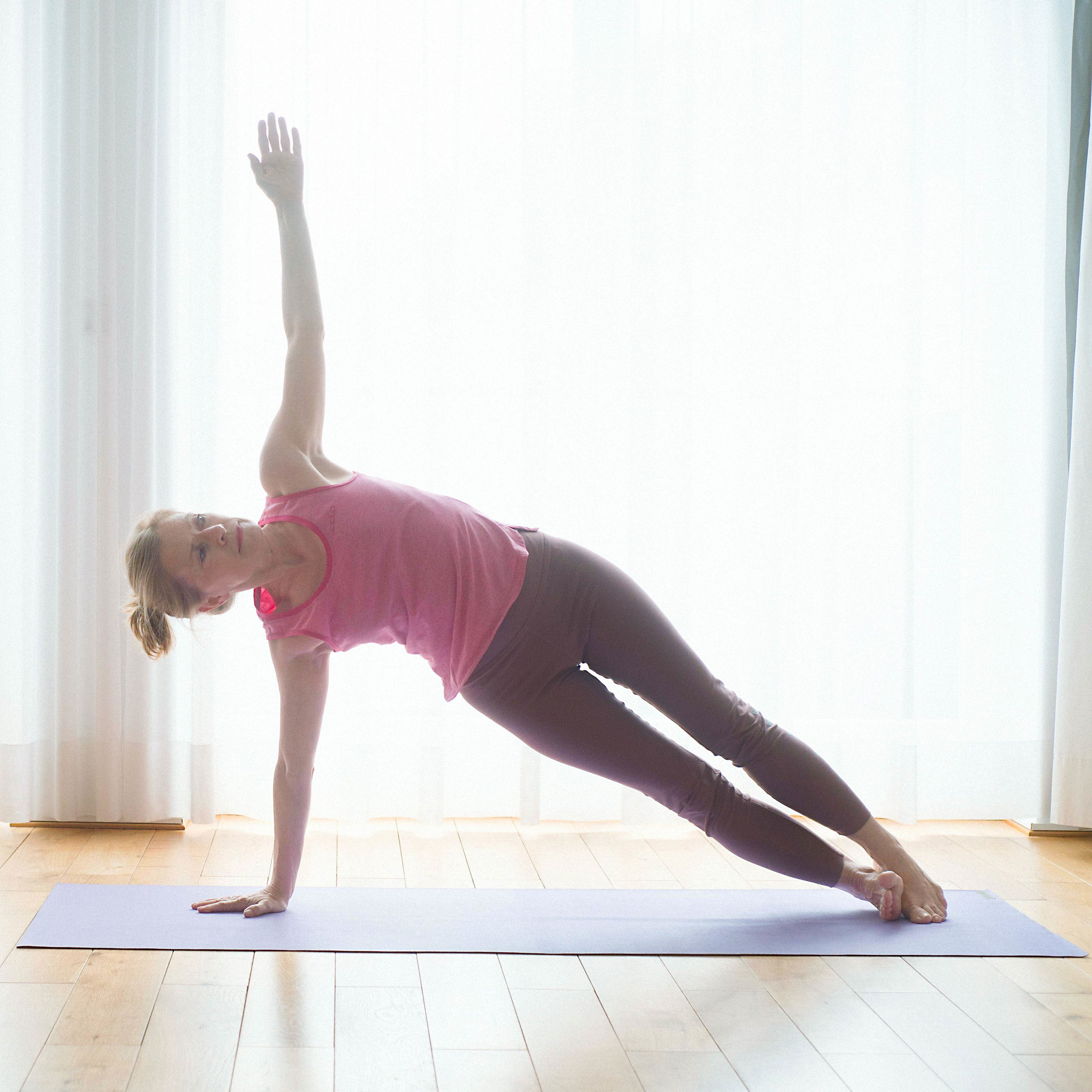Plank pose is more challenging than it looks, especially if one wants to hold the pose longer. One could aim for a minute and three sets. It’s also recommended to move forward and backward. I can imagine to integrate this asana in my daily practice. It builds strength in the shoulders. My upper arms could be a bit more parallel to the wall, but it’s also OK as it is. My body is straight, which is good. The poses feel differently than they look. Pictures help to adjust the asanas.
It’s easier to keep the body straight when the neck is in line with the body. I prefer looking to the floor than to the wall. These days I also keep my neck in line with the body when I do chaturanga dandasana, which is part of sun salutation. Some people have flexible necks, I don’t have a flexible neck. It’s a very sensitive part of the body. There is pressure on the neck when moving the head backwards. It’s more likely that the back arches when the head moves backwards. This is why I prefer the above version.
Plank pose is supposed to prepare pincha mayurasana. I can imagine this, because it strengthens the shoulders.
One pose leads to the next. All sorts of asanas have easier versions and more demanding versions.
So glad that I practiced and explored new poses. After 90 minutes I was exhausted. Within 90 minutes one can do a lot. If one focuses on the 80 % relevant activities, if one doesn’t avoid the challenging parts, I’m sure progress comes fast. It’s great if one can enjoy an asana. This is the final goal. An asana is mastered when it feels good.

